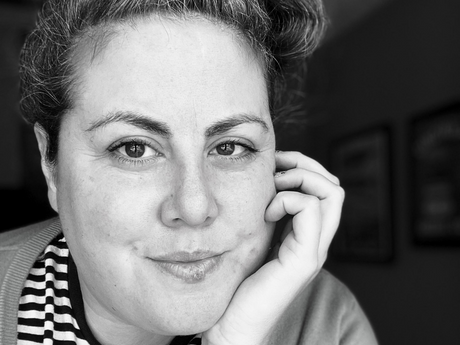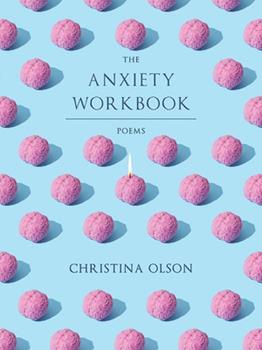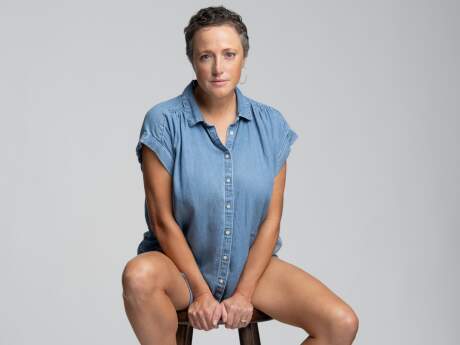In Their Own Words
Christina Olson on “Neither Time Nor Grief is a Flat Circle”

Neither Time Nor Grief is a Flat Circle
The camellias are blooming in the rain,
red and pink, real-life Valentine’s Day
decorations. Their petals are not confetti
or streamers, their petals are decaying
organic matter that will fall and rot and feed
the ground. And whoever said that grief
was a flat circle was wrong, too; our friend
Andy is dead now, and my grief is not flat.
My grief is a sharp, hot thing that pokes me
in the spine whenever I am crabbily
unloading our dishwasher or I spend
another Saturday sleepwalking the internet.
Your one precious life, says my grief. Huh.
I tell my grief to get lost but it stays here
with me, wedges itself between my hip
and the arm of the couch, like a dog
that wants to be close but doesn’t really
understand physics. Like it is a dog, I push
my grief away and then I feel bad
and invite it back, pat the cushion
next to me, smell its wet breath.
It’s oppressive, this grief, yet
without it I feel terribly alone,
wandering through the pandemic.
The virus didn’t kill Andy—his heart
quit. He went into a coma and he died.
One day he was alive and now he’s not.
The camellias are wet in the rain, no one
told them about Andy. One day I’ll have
more dead friends than living ones
and people will think I’m lucky because
that means I’ll have lived a long time.
And that I had friends. I thought
that writing this poem might help,
but it didn’t. And so I tip this poem
into an envelope and I mail
it to you, reader. It’s yours now:
the grief, the dog, the shuddering
flowers. When you are lonely,
this poem falls out of the book
you’re not reading. You’re crying
now, or maybe it’s just the rain.
From The Anxiety Workbook (University of Pittsburgh Press, 2023). All rights reserved. Reprinted with the permission of the author.
On “Neither Time Nor Grief is a Flat Circle”
I wrote this poem for The Anxiety Workbook in the height of a pandemic spring, February 2021. It’s all a true story, in case that matters. I think that it does because it’s also a eulogy for our friend Andy, who had died suddenly the previous fall. We were locked in our house, Zooming and FaceTiming, and if I wasn’t sleeping or crying, I was drinking and grieving.
In hindsight, I was learning how to sit with it—a phrase my therapists over the years have used a thousand times. I think that spring, I was finally learning how to acknowledge grief and anxiety, the way they follow you from room to room in social isolation, how they became as familiar underfoot as one of my dogs. Locked down at home, I couldn’t outrun my feelings for the first time in forty years.
We live on a property where the previous owner spent thirty years planting every species of camellia known to man; we have approximately four hundred bushes. Kramer’s Supreme, Black Beauty, Pink Perfection, Debutante, Almost Eden. They bloom from December through February, but you can’t really use them as cut flowers; the blooms last less than a day indoors. They’re best appreciated outside on the bush. That feels about right. So when I want to go enjoy them, I need to head outside and sit with them.
I didn’t know how to end the poem at first, but my trick when I don’t know is to turn the poem outwards somehow, lest it get too solipsistic. In this case, I took that very literally and aimed the poem back at the reader.
None of us know what living through this collective trauma means for our futures, in one thousand different ways. We’ll learn it as we live through it. I’m an anxious person, so that scares me, but it is the only truth, and this poem helped me verbalize that. I’m grateful to have poetry and my camellia forest to help me out.



